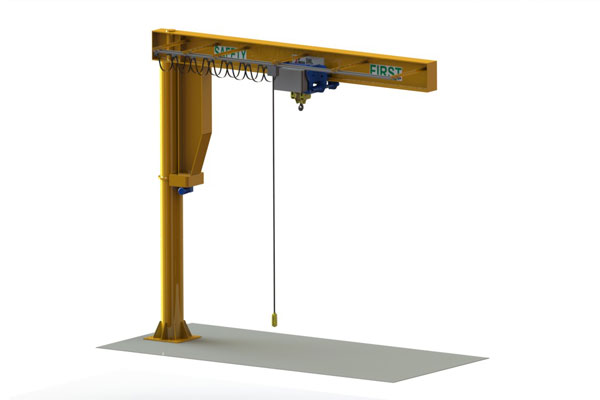The mast type jib crane is a top-mounted, cylinder-shaped lifting design. It’s quite similar to a freestanding jib crane, however, they don’t require a special foundation. Instead, a reinforced concrete foundation is only used to support the crane, which provides stability to it.


